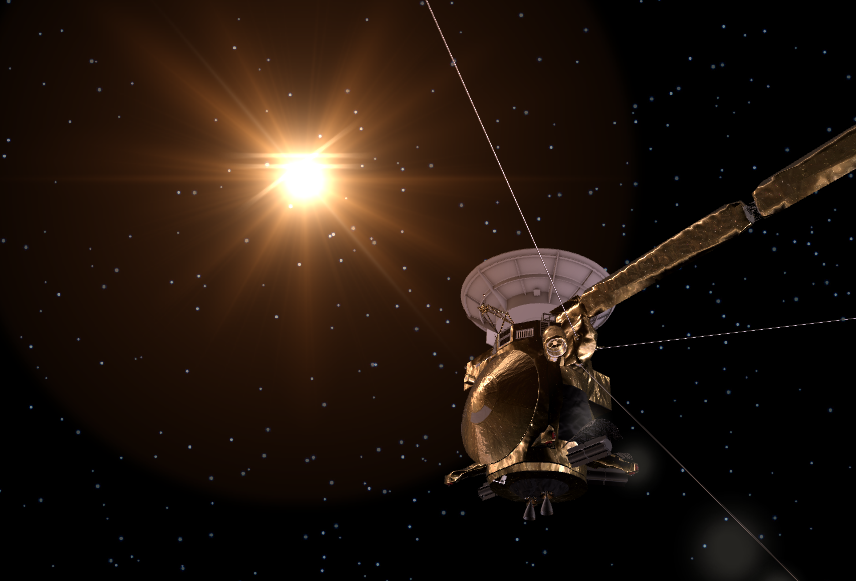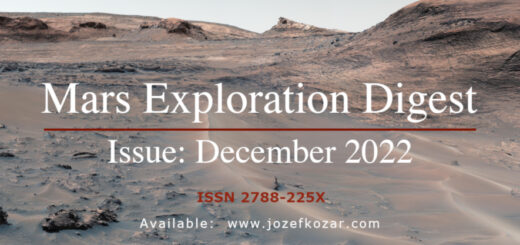Cassini’s grand finale
One of the most successful planetary exploration missions in history is coming to its end. The end of the mission will not be just the finale. We all call it a grand finale. Cassini, we all, people on blue Earth, stand behind you.
Mission to planet Saturn was already planned a long time ago. As one of the biggest challenges for mankind, the mission was approved and the development of the spacecraft started in 80’s. The spacecraft was launched on October 15, 1997 at 08:43:00 UTC with the Titan IV launcher from Cape Canaveral (launch pad SLC 40).

Interplanetary flight to its destination included 4 gravity assist maneuvers – flyby of Venus (26th April 1998 with closest distance 283 km), again flyby of Venus on 24th June 1999 (closest distance 6052 km), flyby of Earth/Moon on 18th August 1999 (distance 1171 km), flyby of an asteroid 2685 Masursky on 23rd January 2000 (distance 1 600 000 km) and the flyby of Jupiter on 30th December 2000 (closest distance 9 852 924 km).
Cassini is the fourth space probe which has visited the planet Saturn. And it is the first one which successfully entered its orbit on 1st July 2004. Since that time it has studied the planet Saturn, its beautiful rings and its moons.
The mission is a joint project of NASA and ESA. One of the most important challenges of this cooperation was also the ESA’s lander Huygens which was part of the entire mission. Huygens lander was built and operated by European Space Agency and European company Aerospatiale. It has successfully landed on the surface of Saturn’s moon Titan on 14th January 2005 (12:43 UTC) near the Xanadu region. That time, everyone was happy that it landed without any problem and also because it didn’t end up in the Titan’s ocean. This was the first and, so far, only landing ever accomplished in the outer Solar System. Anyway, the lander was designed to float – just in case it will splash in to the ocean. After it landed, Huygens continued with sending the data for about 90 minutes. The last contact with Huygens probe was at 13:37 UTC of the same day (January 14, 2005).

Very interesting features and discoveries by the mission include the liquid “ocean”, or better to say, lakes on the surface of Titan. Radar images obtained on July 21, 2006 by Cassini spacecraft have confirmed the existence of these lakes of liquid hydrocarbon (most probably methane and ethane). Lakes were discovered in Titan’s northern latitudes. This is the first discovery of currently existing lakes anywhere besides on Earth. The size of the lakes ranges from one to one-hundred kilometers across. So they are quite large.
Have you seen the landing on Titan? Don’t worry, take a look at this excellent video of Jet Propulsion Laboratory:
And what was on the surface? What did Huygens see? The lander has taken some very nice photos, although its data transmission was just 90 minutes. The surface looked solid and very similar to some other planets we already know. But of course, Titan is a moon of Saturn, not a planet. The “rocks” on the surface are actually the frozen water ice.

And then it came. Another moon of Saturn, Enceladus, became the moon offering the world that nobody ever expected. Cassini’s close flyby’s has confirmed the frozen ice crust covering the entire moon. Further observations and exploration confirmed the ocean below this frozen ice crust. The presence of an internal salty ocean in contact with the moon’s rocky core makes Enceladus one of the most likely place in the Solar System that could host an alien microbial life. So we are maybe really not as special as we think, if there is a life somewhere else! Who knows, we will study this with our further planetary exploration missions.
I know, the following words may sound sad. But the mission is coming to its end. Hundreds of scientists have been working on the mission, several thousands of people worked on the mission. The mission was very highly successful. It helped us to understand a lot of unknowns, providing many discoveries and even surprises. The last part of the mission – called “Grand Finale” – is just at its beginning. It will last from April 2017 to September 2017. And then the Cassini spacecraft will impact with the planet Saturn.
And how long will the impact last? You know, planet Saturn is a gas giant. It is not a solid planet as we know it for example on Earth or Mars. But the hot and extremely high atmospheric pressure will destroy the spacecraft. The “impact” will last just 1 minute. Stay tuned, you will definitely be able to watch it online. I promise that I will update this post with fresh information where and when to watch the Grand Finale’s last minutes.
Now the mission still goes on, so cross your fingers that everything will go smooth and with no problems. And keep smiling!
~Jozef
sources: NASA, ESA, Wikipedia & Wikimedia Commons












Are you ready for Grand Finale?